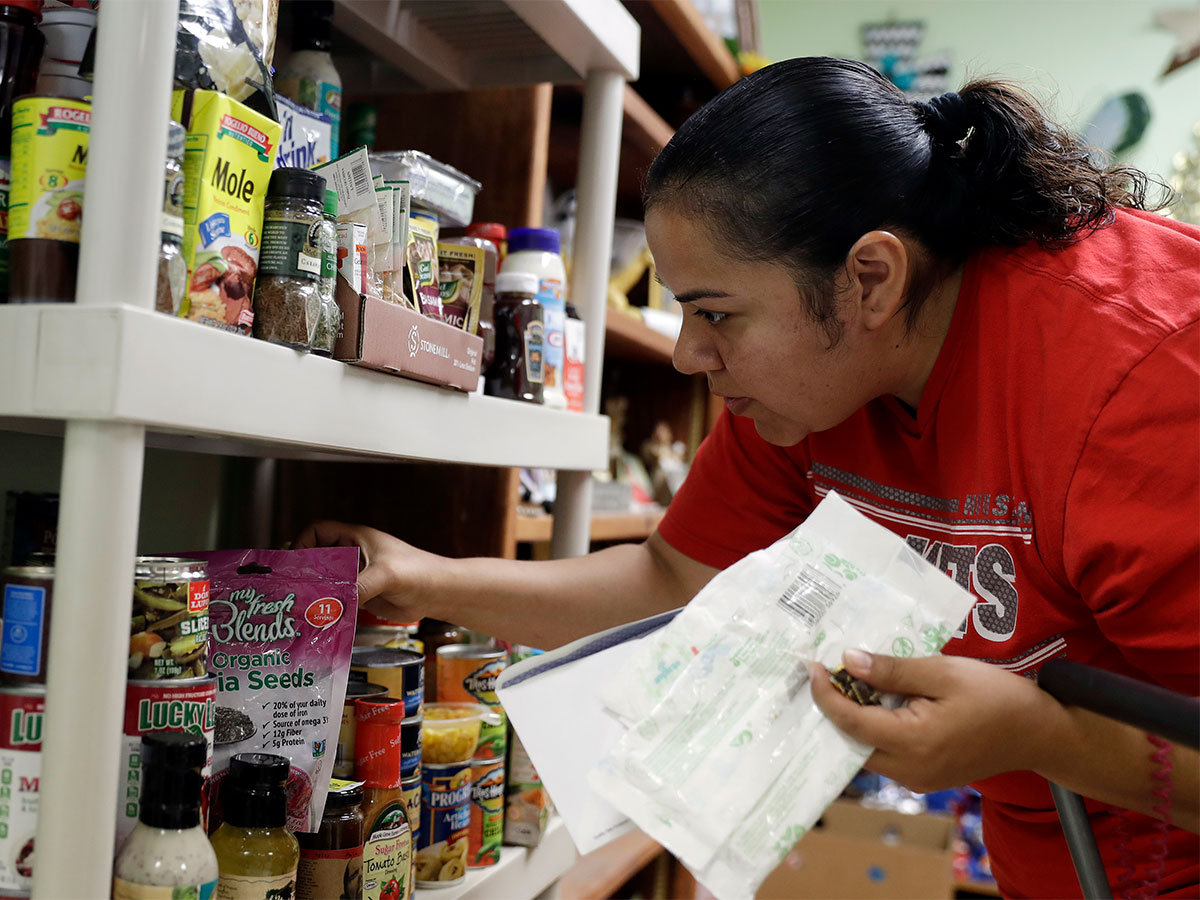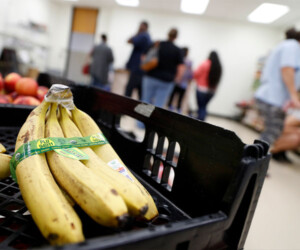
Map the Meal Gap Study released by Feeding America shows more kids and families impacted by lack of nutritious food.
Just as the U.S. House of Representatives is considering devastating budget cuts to SNAP and Medicaid – programs that help older adults, children and hard-working families, the newly released Map the Meal Gap report shows that food insecurity is on the rise in Texas. Both are critical situations individually, but combined they create a difficult situation for Houston Food Bank as well as food banks and other hunger-relief agencies across Texas and the nation. The new data from Map the Meal Gap shows that food insecurity increased in Texas, growing from 16.4% in 2022 to 17.6% in 2023.
This study is conducted by Feeding America each year to learn more about food insecurity at the local level. The newly released report shows that Texas continues to have the largest food-insecure population in the nation with 5,366,440 Texans facing food insecurity.
The data confirms that the food insecurity crisis in Texas is growing as our food banks continue to see high demand for food assistance. 1 in 7 Senior Texans are experiencing food insecurity. It increased from 9.8% to 13.6% since last year’s report.
 “What the Map the Meal Gap report shows is that we need to protect critical programs like SNAP at a time when families, seniors, veterans and kids need it most,” says Brian Greene, president/CEO of Houston Food Bank.
“What the Map the Meal Gap report shows is that we need to protect critical programs like SNAP at a time when families, seniors, veterans and kids need it most,” says Brian Greene, president/CEO of Houston Food Bank.
Despite the rise in food insecurity, the proposed SNAP cuts would be the largest rollback of food assistance in our nation’s history. Some of the hardest hit populations would be seniors living on fixed incomes, veterans unable to find work, and families with children who are not school age and not in a childcare program.
Nearly 900,000 additional people could be pushed into poverty during a recession by the SNAP cost-sharing plan, according to the Urban Institute.
“The harsh reality that we are facing is that food insecurity is up and critical federal funding might be significantly lowered and, as a result, our work helping kids, seniors and families get the food and nutrition they need is going to be a great challenge,” says Greene, “Cuts to SNAP will not just hurt those in poverty, they will also affect middle-class families — especially people with parents in nursing homes that rely on Medicaid, or people who are already stretched thin trying to cover their monthly bills.”
The reconciliation bill released this week includes measures that would lead to a decrease in benefit levels, fewer people eligible for food assistance, and a significant reduction in the number of people participating in the program. The changes would:
- limit future adjustments to the Thrifty Food Plan, depressing benefit levels and making it harder for families to afford groceries for years to come;
- subject more seniors (up to age 65) and more parents (for children as young as 7) to the harsh three-month time limit by requiring that they document 20 hours of work per week in order to receive benefits;
- make refugees ineligible for SNAP, denying them a basic need and hampering their successful integration into society; and
- require states to pay anywhere from 5% to 25% of SNAP benefit amounts and increase the state share of administrative costs from 50% to 75%, which would hobble the program’s ability to meet increased need during times of natural disaster and economic crisis.
In addition, state governments would also be faced with tough choices as the federal proposal would require Texas to pay anywhere from 5% to 25% of the food benefits and increase the state’s administrative costs from 50% to 75% or make cuts to the program to account for that amount. This would result in the Texas state legislature needing to find approximately $1.2 billion to keep the program whole.
“At the time when Americans are most likely to need SNAP, states would be least equipped to pay for the increase in need,” says Greene. “This is why it’s so important for the benefits to remain federally funded.”
For decades, SNAP has been the most powerful tool America has to support families facing hunger while also assisting our farmers. Cuts to SNAP will not just hurt those in deep need, they will also impact hard-working, middle-class families who are already stretched thin trying to make ends meet.
 “SNAP has a greater return on investment than any other program,” adds Greene. “These dollars not only supplement food budgets they are spent and reinvested back into local economies, provide exponentially more meals than a food bank alone – nine meals to our one, and ensure consistent nutrition to beneficiaries.”
“SNAP has a greater return on investment than any other program,” adds Greene. “These dollars not only supplement food budgets they are spent and reinvested back into local economies, provide exponentially more meals than a food bank alone – nine meals to our one, and ensure consistent nutrition to beneficiaries.”
The most devastating aspect of the SNAP proposal is the elimination of work exemptions for parents with children under age 7 and older Americans over age 65. Receiving Medicaid would also be tied to work requirements impacting individuals up to the age of 64 whose income could be as low as $16,000 per year for one person.
Currently, around 1 million people in the 18 southeast Texas counties served by Houston Food Bank are considered food insecure, meaning they lack consistent access to enough nutritious food to fuel a healthy life. In addition, 1 in 6 Texans are already working hard to find affordable food and healthcare, pay their rent, and put gas in the car.
“Houston Food Bank appreciates all of the hard work from both sides that has gone into this proposal, but as we advocate for all who are in need, we are reminded that hunger is nonpartisan,” says Greene. “Food banks are united in our plea to protect SNAP.”
